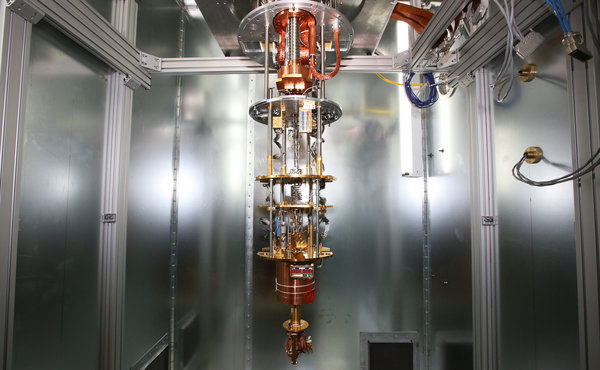A company in Canada, D-Wave Systems, is making some of the big industry players sit up and take notice. Back in November of last year I wrote about D-Wave’s Vesuvius 512-qubit processor and how early adopters were purchasing the technology to do complex problem solving. One of its early adopters was Lockheed Martin. And now the U.S. defense and space contractor has big plans to upgrade its D-Wave system (seen below) to take on commercial tasks.
Recently in the New York Times, Ray Johnson, Lockheed’s chief technical officer described how the company intends to use its quantum computer to test radar, space and aircraft systems. A typical test would look at a satellite network and instantly determine how it would be impacted by a solar coronal event, or a nuclear explosion. Such analysis in traditional silicon-based computing could take weeks and involve reading of millions of lines of code. But the D-Wave quantum computer would react instantly. Johnson describes it as “a revolution not unlike the early days of computing.”
Quantum computers are now for real. They are fast and great at solving complex problems. D-Wave is one of the first companies to take the technology from the lab to commercial application. Early adopters are using its products to:
- sequence genomes
- study protein behaviour for cancer treatment
- develop artificial robotic vision
- evaluate complex financial strategies
- optimize logistical support in production and distribution systems
The D-Wave system that Lockheed Martin is using adiabatic quantum computing or AQC. This is technology that does away with circuits and components found in classical computers. There are no switches or logic gates. You can read a definition of AQC on Wikipedia. I’m not sure it helps much so if any of my readers can provide further insights this should lead to a lively discussion.









